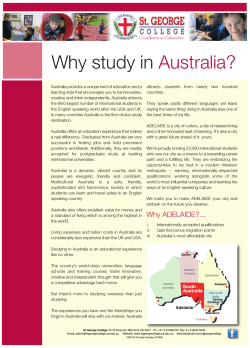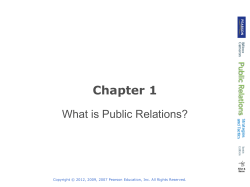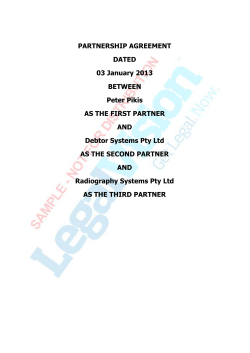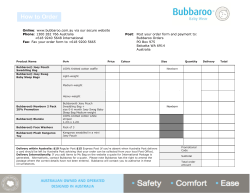
in2 Physics @ Preliminary Teacher Resource Curriculum correlation grids Prescribed Focus Areas
in2 Physics @ Preliminary Teacher Resource Prescribed Focus Areas P1. Outlines the historical development of major principles, concepts and ideas in physics Feature: p. 149 2. The nature and practice of physics P2. Applies the processes that are used to test and validate models, theories and laws of science with particular emphasis on first-hand investigations in physics Focus: pp. 53, 164 3. Applications and uses of physics P3. Assesses the impact of particular technological advances on understanding in physics Feature: pp. 28, 167 P4. Describes applications of physics which affect society or the environment Feature: p. 62 P5. Describes the scientific principles employed in particular areas of research in physics Focus: pp. 21, 33, 53 Focus: pp. 21, 33, 75, 135, 181, 205, 229 Feature: pp. 38, 62 Focus: p. 164 Sa m pl 5. Current issues, research and developments in physics Focus : p. 53 pa ge s 4. Implications for society and the environment e 1. The history of physics Curriculum correlation grids Page 1 Copyright © Pearson Australia 2009 (a division of Pearson Australia Group Pty Ltd) ISBN 978 0 7339 6206 6 This page from the in2 Physics @ Preliminary Teacher Resource may be reproduced for classroom use. in2 Physics @ Preliminary Teacher Resource Module 1 Moving About Curriculum correlation grids 1. Vehicles do not typically travel at a constant speed PAGE STUDENTS: PAGE identify that a typical journey involves speed changes 5 plan, choose equipment or resources for, and perform a first-hand investigation to measure the average speed of an object or a vehicle Act. 1.1 distinguish between the instantaneous and average speed of vehicles and other bodies 5 solve problems and analyse information using the formula: 18 pa ge s STUDENTS LEARN TO: vav = ∆r ∆t where r = displacement 7 present information graphically of: e distinguish between scalar and vector quantities in equations displacement versus time velocity versus time pl • • Sa m for objects with uniform and non uniform linear velocity compare instantaneous and average speed with instantaneous and average velocity 7 Define average velocity as: 7 vav = ∆r ∆t Page 2 Copyright © Pearson Australia 2009 (a division of Pearson Australia Group Pty Ltd) ISBN 978 0 7339 6206 6 This page from the in2 Physics @ Preliminary Teacher Resource may be reproduced for classroom use. 20 in2 Physics @ Preliminary Teacher Resource Module 1 Moving About Curriculum correlation grids 2. An analysis of the external forces on vehicles helps to understand the effects of acceleration and deceleration PAGE STUDENTS: PAGE describe the motion of one body relative to another 8 analyse the effects of external forces operating on a vehicle 52 identify the usefulness of using vector diagrams to assist solving problems 22 explain the need for a net external force to act in order to change the velocity of an object 39 describe the actions that must be taken for a vehicle to change direction, speed up and slow down 48 describe the typical effects of external forces on bodies including: • friction between surfaces • air resistance 44 define average acceleration as: 9, 10 v−u therefore aav = t 50 plan, choose equipment or resources for and perform a first-hand investigation to demonstrate vector addition and subtraction Act. 2.1 solve problems using vector diagrams to determine resultant velocity, acceleration and force 32 plan, choose equipment or resources and perform first-hand investigations to gather data and use available evidence to show the relationship between force, mass and acceleration using suitable apparatus Act. 3. 2 solve problems and analyse information using: 52 e gather first-hand information about different situations where acceleration is positive or negative pl ∆v ∆t Sa m aav = pa ge s STUDENTS LEARN TO: ∑ F = ma for a range of situations involving modes of transport Page 3 Copyright © Pearson Australia 2009 (a division of Pearson Australia Group Pty Ltd) ISBN 978 0 7339 6206 6 This page from the in2 Physics @ Preliminary Teacher Resource may be reproduced for classroom use. Act. 3.1 in2 Physics @ Preliminary Teacher Resource Module 1 Moving About TIME SKILLS CONTENT (LESSONS) MODULE CONTENT Teaching programs SUGGESTED STRATEGIES IN2 PHYSICS @ PRELIMINARY 1 pa ge s RESOURCES 11.2 Plan first-hand investigations to: b identify variables that need to be kept constant, develop strategies to ensure that these variables are kept constant, and demonstrate the use of a control c design investigations that allow valid and reliable data and information to be collected d describe and trial procedures to undertake investigations and explain why a procedure, a sequence of procedures or the repetition of procedures is appropriate e predict possible issues that may arise during the course of an investigation and identify strategies to address these issues if necessary 11.3 Choose equipment or resources by: a identifying and/or setting up the most appropriate equipment or combination of equipment needed to undertake the investigation b carrying out a risk assessment of intended experimental procedures and identifying and addressing Student Book: • Module opening: Skills, context and inquiry activity, p. 317. Do the jelly bean jar activity featured in module opening for Chapter 17 ‘Skills’. Emphasise the need for calculations and error margins and not guessing. pl e • Sa m 1 Skills: • • • distinguish between scalar and vector quantities in equations identify that a typical journey involves speed changes plan, choose equipment or resources for, and perform a firsthand investigation to measure the average speed of an object or a vehicle Scalar and vector: Student Book: • Checkpoint 1.1, p. 5 • List all the words to do with physics, placing them in two columns headed ‘Scalar’ and ‘Vector’. Link distance and displacement, and so on. Define scalar and vector. Page 1 Copyright © Pearson Australia 2009 (a division of Pearson Australia Group Pty Ltd) ISBN 978 0 7339 6206 6 This page from the in2 Physics @ Preliminary Teacher Resource may be reproduced for classroom use. Checkpoint 1.2, p. 9 Activity 1.1, p. 16 Reviewing: 1–5, p. 18 in2 Physics @ Preliminary Teacher Resource Module 1 Moving About TIME SKILLS CONTENT (LESSONS) MODULE CONTENT Teaching programs SUGGESTED STRATEGIES IN2 PHYSICS @ PRELIMINARY pa ge s RESOURCES potential hazards c identifying technology that could be used during investigations and determining its suitability and effectiveness for its potential role in the procedure or investigation d recognising the difference between destructive and non-destructive testing of material and analysing potentially different results from these two procedures Solving Problems: 8, p. 18 Physically Speaking: p. 17 Activity Manual: Activity 1.1 , p. 1 pl 12.2 gather first-hand information by: Sa m a using appropriate data collection techniques, employing appropriate technologies, including data loggers and sensors b measuring, observing and recording results in accessible and recognisable forms, carrying out repeat trials as appropriate 2 Do Activity 1.1 as a class group. Determine the average speed and velocity of your journey to school. See ‘Travelling home’ in Activity Manual. Set for homework and discuss answers in class. Do activity as per manual. e • • • define average velocity as: v av = • ∆r ∆t solve problems and analyse Velocity: Student Book: • Solving Problems: 7, 9, 11, pp. 18–19 • Distinguish between average and instantaneous velocity/speed. Introduce the idea of relative velocity. Page 2 Copyright © Pearson Australia 2009 (a division of Pearson Australia Group Pty Ltd) ISBN 978 0 7339 6206 6 This page from the in2 Physics @ Preliminary Teacher Resource may be reproduced for classroom use. in2 Physics @ Preliminary Teacher Resource Activity Manual answers and support notes Module 1 Moving About CHAPTER 1 GETTING FROM A TO B: KINEMATICS Activity 1.1: The speed of a ball Support notes Alternative method 1: Rolling ball s 4 5 6 7 Mark 1 m intervals on the floor of the lab with marking tape—about 6 m if possible. Have at least two students time each metre interval. Students are to time from when the ball starts rolling to when it passes their designated metre mark. Roll the ball so that it is moving at a fairly constant rate. Record the times for each metre mark in a results table. Graph distance versus time. Use the graph to determine average speed and if the speed is constant. pa ge 1 2 3 Alternative method 2: Travelling home pl e 3 4 5 6 7 m 2 Have students time their journey home from school. Repeat this at least three times to obtain an average. Copy a map of the journey from the street directory and mark the streets with a highlighter. Remember to copy the scale of the map to determine the distance travelled. Measure the distance travelled. Calculate the average speed of the journey. Determine the displacement of the journey. Calculate the average velocity. Discuss the difference in the two values. Sa 1 Alternative method 3: Running races 1 2 3 4 5 6 7 Mark out a 50 m running track using a trundle wheel or tape measure. Mark every 10 m with witches’ hats. Select both timers who will stand at each 10 m mark and runners. Timers record times from the start of the race until the runner passes their designated 10 m mark (use multiple timers at each 10 m mark if you have enough students in your class). Record times for each 10 m mark in a results table. Graph displacement versus time. Use the graph to determine average speed and if the speed is constant. Runners could complete a number of different trials, such as walking at a constant rate, sprinting or jogging, or organise a race. Page 1 Copyright © Pearson Australia 2009 (a division of Pearson Australia Group Pty Ltd) ISBN 978 0 7339 6206 6 This page from the in2 Physics @ Preliminary Teacher Resource may be reproduced for classroom use. in2 Physics@ Preliminary Teacher Resource Module 1 Moving About Safety notes and risk assessments The safety notes in in2 Physics are designed to provide a quick reference guide for teachers to assess the requirements and health and safety considerations for each practical. Safety notes NOT HS OTHER HAZARD/ PRECAUTIONS/ HINTS RECOMMENDED SAFETY REQUIREMENTS 1.1 The speed of the ball (first-hand investigation) – Equipment: digital camera, stopwatch, tape measure etc. Design the experiment to measure the average speed of an object or a vehicle. No safety notes required 2.1 Three-way stretch (first-hand investigation) – Equipment: spring balances, protractor Design the experiment to demonstrate vector addition and subtraction. No safety notes required 3.1 Positive and negative accelerations of objects (first-hand investigation) – Equipment: protractor, 50 g mass, string, chair on wheels or skateboard, cardboard, tape No safety notes required No safety notes required 3.2 F = ma (first-hand investigation) – Equipment: ticker timer, trolley ramp, masses, air track, pulley, light gate, data loggers, etc. Design the experiment to show the relationship between force, mass, and acceleration. No safety notes required 4.1 Bouncing balls (first-hand investigation) – Equipment: tennis ball, balance scale, 2 m rulers or tape measures Extension: bouncing ball, pop ball (or jumping disc) No safety notes required No safety notes required pa ge s HS/DG e NAME Sa m pl ACTIVITY Page 1 Copyright © Pearson Australia 2009 (a division of Pearson Australia Group Pty Ltd) ISBN 978 0 7339 6206 6 This page from the in2 Physics @ Preliminary Teacher Resource may be reproduced for classroom use. in2 Physics@ Preliminary Teacher Resource Module 1 Moving About Safety notes and risk assessments The safety notes in in2 Physics are designed to provide a quick reference guide for teachers to assess the requirements and health and safety considerations for each practical. Safety notes HS/DG 4.2 Conservation of momentum (first-hand investigation) – 4.3 Safety in cars (secondary-source investigation) – OTHER HAZARD/ PRECAUTIONS/ HINTS RECOMMENDED SAFETY REQUIREMENTS Equipment: 2 steel balls, 2 m ruler, 1 marble, 9 stopwatches No safety notes required No safety notes required Design an information poster about safety in a car. No safety notes required pl Key to table HS = hazardous substance as classified by NOHSC criteria DG = dangerous good NOT HS= NOT a hazardous substance as classified by NOHSC criteria NOT HS pa ge s NAME e ACTIVITY Sa m Disclaimer: The safety notes and related risk assessment sheets are provided to offer guidance only. They must not be construed to waive or modify any legal obligation of the school to ensure the safety of students when conducting the experiment or activity. It is the responsibility of the school to have the content of the risk assessment sheets checked against the material safety data sheets (MSDS) provided by the manufacturer of chemicals used in the school’s laboratories. Risk assessment sheets must not be used in the school’s laboratories until they have been checked against the school’s MSDS, signed and dated. To the maximum extent permitted by law, the publisher disclaims all responsibility for actions taken or not taken in relation to the safety notes and risk assessment sheets. Page 2 Copyright © Pearson Australia 2009 (a division of Pearson Australia Group Pty Ltd) ISBN 978 0 7339 6206 6 This page from the in2 Physics @ Preliminary Teacher Resource may be reproduced for classroom use.
© Copyright 2025














